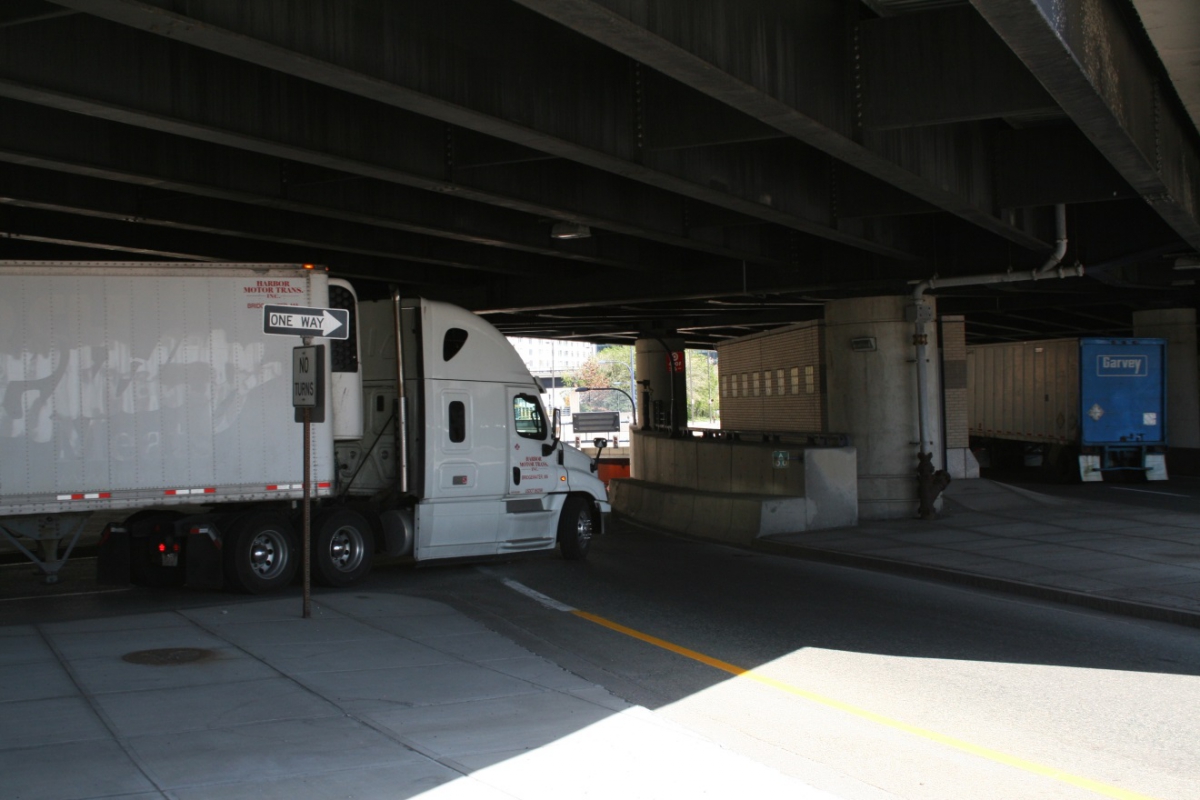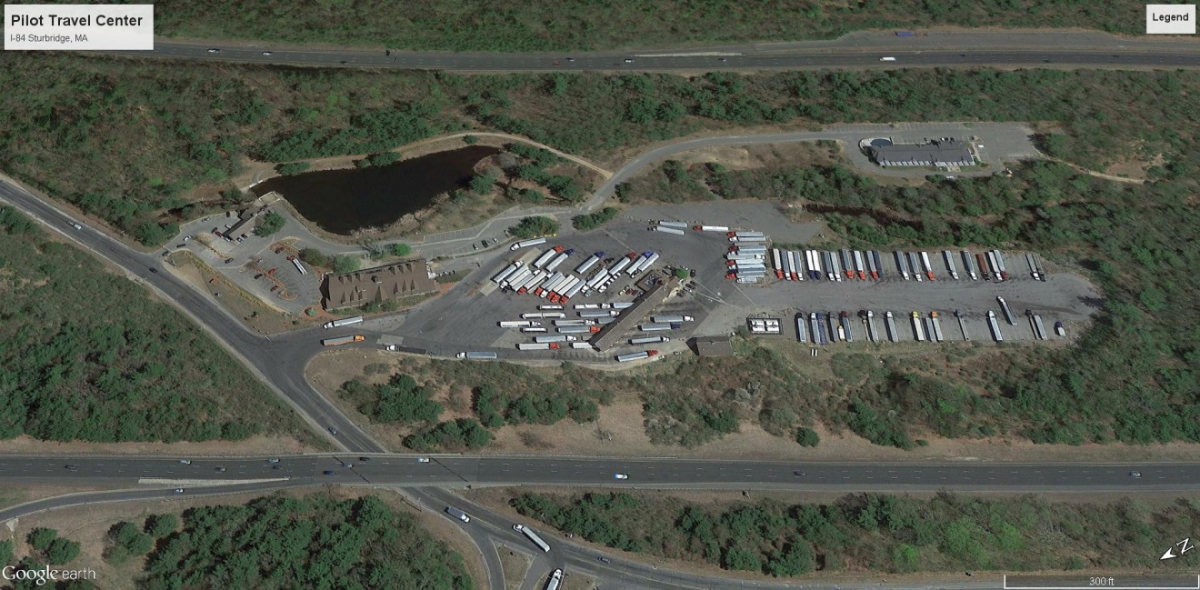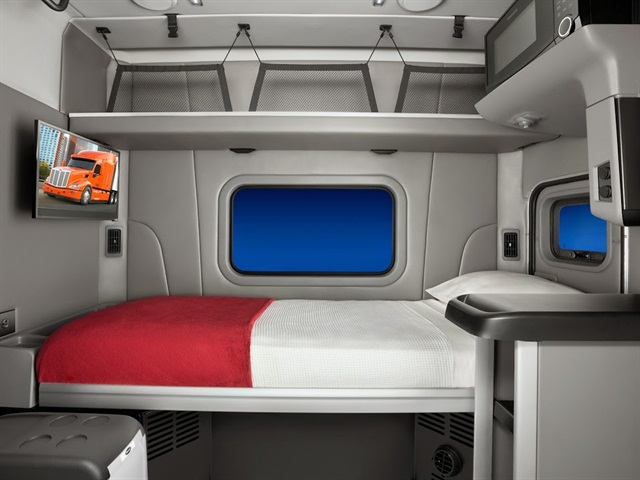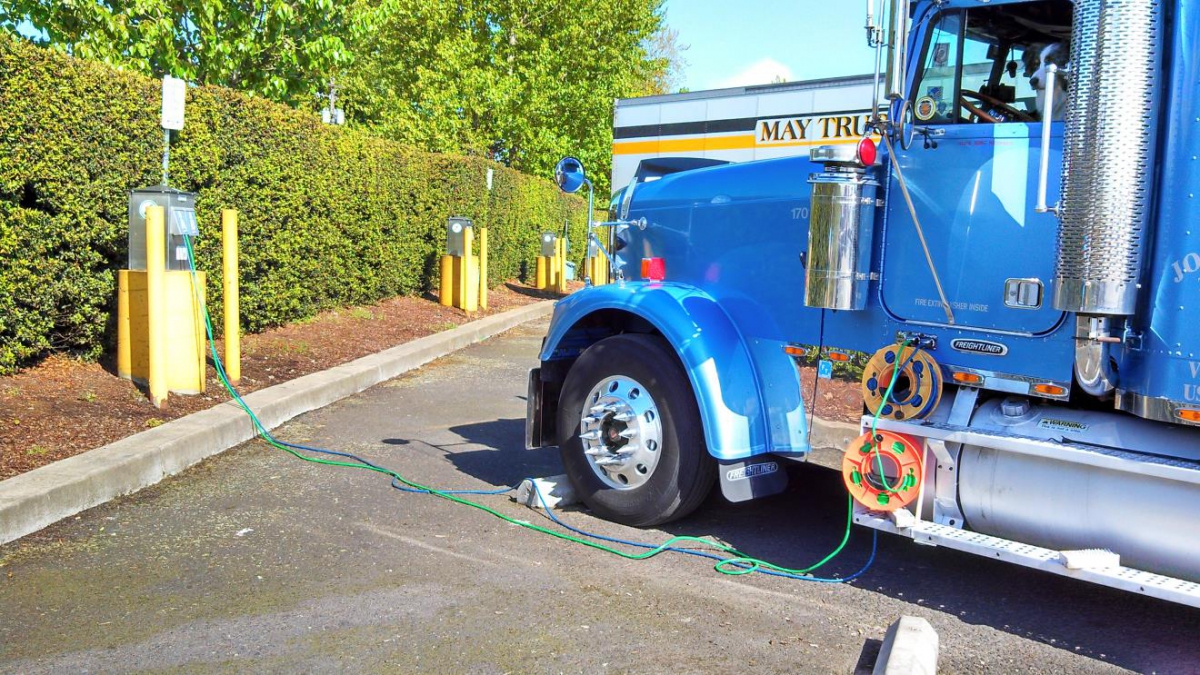
Trucks are the most important means of bringing goods into New England, but for long-distance truckers traveling into or through the Boston region, it can be a difficult search to find a good place to park their rigs for the ten-hour rest period that federal safety regulations require them to take after 11 hours of driving. Rest locations—an important subsystem of the freight transportation system that provide services and amenities, such as meals, fuel, and electric hook-ups—are lacking in the region, according to staff of the Boston Region MPO’s Freight Program.
In a recent study, the MPO staff analyzed and mapped the publicly and privately owned rest locations in Massachusetts and made recommendations for addressing gaps in service in the Boston region. The study focused on the corridor between Connecticut and Maine formed by Interstates 84, 90, 290, 495, and 95. This corridor connects the Middle Atlantic States with northern New England and the Maritime Provinces of Canada. After a truck stop near I-84 in Sturbridge, the next truck stop with amenities and ample parking is in Kittery, Maine, more than 100 miles away.

Semi-trailers used for long-distance routes are often pulled by a tractor with an integrated sleeping compartment. These “sleeper” units provide the driver a convenient and comfortable place to rest. The challenge for a driver, however, is to find a rest location when nearing the end of the allowed driving period that is safe, legal, and conveniently located for the next day’s journey. Approaching the final destination, customer delivery time windows must also be considered as drivers and motor carrier dispatchers work to keep trips efficient. If a good rest location is not readily accessible, a driver may simply park at the side of a road, a practice referred to as informal parking.

A preferable rest location is a large commercial truck stop, where diesel fuel, maintenance services, food, and other amenities are available. Some are equipped with truck stop electrification (TSE) technology that provides electric current to power refrigeration units, heating, and air conditioning while the tractors’ diesel engines are turned off. Public rest areas on interstates can supplement, but not substitute for large commercial truck stops.
Foremost of the recommendations from the study was a suggestion to add a new private truck stop near the northwest arc of I-495. However, truck stops are usually located where land is inexpensive, and the acquisition of sufficient land for a large truck stop in or near the Boston region may be more expensive than a truck stop operator’s business model allows. Federal funds may be used to improve the rest location system, however, and the study recommended exploring this possibility. Other recommendations offered ideas for improving the usefulness of publicly owned rest areas on the interstate highway system and revitalizing public rest areas through a new type of public-private partnership.

The adequacy of the rest location system is a nationwide problem, and the MPO staff evaluated the entire system in Massachusetts in recognition of the importance of truck transportation to the Boston region itself. State, neighboring MPOs, and industry stakeholders will be involved in any follow-on work that the MPO does on this topic.
